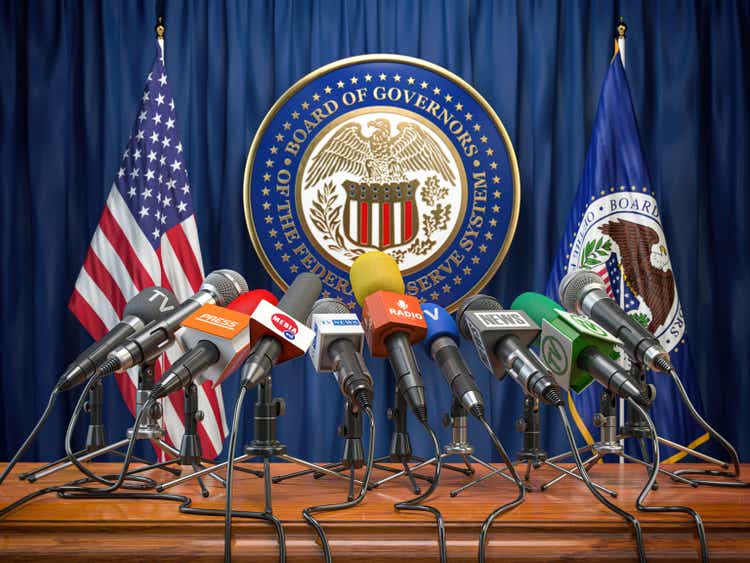Bet_Noire
“U.S. Job Growth Unexpectedly Soared In July.”
Total employment returns to a level last reached in February 2020.
Therefore, the Federal Reserve, for the time being, can continue to tighten up its monetary policy.
The unemployment rate dropped to 3.5 percent from 3.6 percent, a figure that matches a 50-year low.
Average hourly earnings rose by 5.2 percent, year-over-year.
Still, the labor force participation rate remains near 60.0, quite low from recent experience.
But, for now, it looks as if the Fed can live with these data and still feel justified in continuing on its path to greater monetary tightness.
And, that is what the Fed is doing.
The Effective Federal Funds Rate
The effective Federal Funds rate remained at 2.23 percent all week, reflecting the latest 75 basis point move that the Federal Open Market Committee approved at its latest meeting.
The upper bound of the target range for the Fed is 2.50 percent.
We have probably seen the last of the 75 basis point moves this year, but there may be two, possibly three, more increases in the Fed’s policy rate of interest this year.
Three moves of 50 basis points would bring the upper bound of the target range to be 4.00 percent, given the three remaining meetings of the FOMC this year.
The Fed still has FOMC meetings scheduled for September 21-22, November 2-3, and December 14-15.
Many analysts believe that the Federal Funds rate needs to go at least this high, if not higher.
This, of course, is a big question mark.
Just how high does Jerome Powell, Fed chair, and the FOMC believe the rate will have to go?
Earlier this week, I expressed my own views on this point.
Also, the Bank of England set out its picture of the future as it raised its policy rate of interest by another 50 basis points this week.
Inflation is turning into a major threat throughout the world.
Securities Portfolio
The other immediate target of the Federal Reserve is the size of its securities portfolio.
In June, the Fed began to reduce the size of its securities portfolio.
In the past banking week, the Fed oversaw a $15.1 billion reduction in its portfolio of U.S. Government securities bought outright.
This is the largest weekly reduction in the portfolio so far.
Since, June 22, 2022, the Fed has reduced the size of its whole portfolio by $55.5 billion.
So, it is moving right along with letting securities mature off of its balance sheet.
What Is Happening Elsewhere
But, there are other things happening on the Fed’s balance sheet.
The reduction in the Fed’s securities portfolio helps to reduce the overall size of the Fed’s balance sheet, but there are other things going on.
Since the Fed began to raise its policy rate of interest in the middle of March 2022, the Fed has overseen a $550.0 billion decrease in its account “Reserve Balances with Federal Reserve Banks.” This account is often used as a proxy for “excess reserves” in the commercial banking system.
So, “excess reserves” in the commercial banking system have experienced a substantial decline since the Fed began to increase its policy rate of interest.
This makes sense: as commercial bank liquidity is reduced, the Fed’s policy rate of interest should go up. This is what has happened, overall, since the middle of March.
What seems to have caused this reduction in Reserve Balances with Federal Reserve Bank, with “excess reserves.”
Well, the Fed’s amount of reverse repurchase agreements has gone up by over $580.0 billion since the middle of March.
That is, the decline in Reserve Balances is roughly of the same magnitude as the rise in the Fed’s selling of securities under an agreement to repurchase these same securities after several days.
Thus, the Federal Reserve is using security “repos” to manage bank “excess reserves” and hence control the level of its policy rate of interest.
So, just reducing the Fed’s portfolio of securities bought outright is not as easy as just letting securities mature and run off of the Fed’s balance sheet.
In recent weeks, say from June 22, 2022, the amount of reverse repurchase agreements has declined on the Fed’s balance sheet, by $68.3 billion even though Reserve Balances with Federal Reserve Banks, “excess reserves,” have gone up.
The point of this discussion is that there are a lot of things going on at the Fed, in addition to the Fed’s efforts to increase its policy rate of interest and the Fed’s efforts to reduce the size of its securities portfolio bought outright.
Overall
The bottom line, what we need to pay attention to, is the fact that the Fed is now raising its policy rate of interest, and the Fed is now reducing the size of its securities portfolio.
This is the Fed’s fight against inflation.
Let’s keep our eyes focused on these two efforts as we go through this period of policymaking turmoil.


Be the first to comment